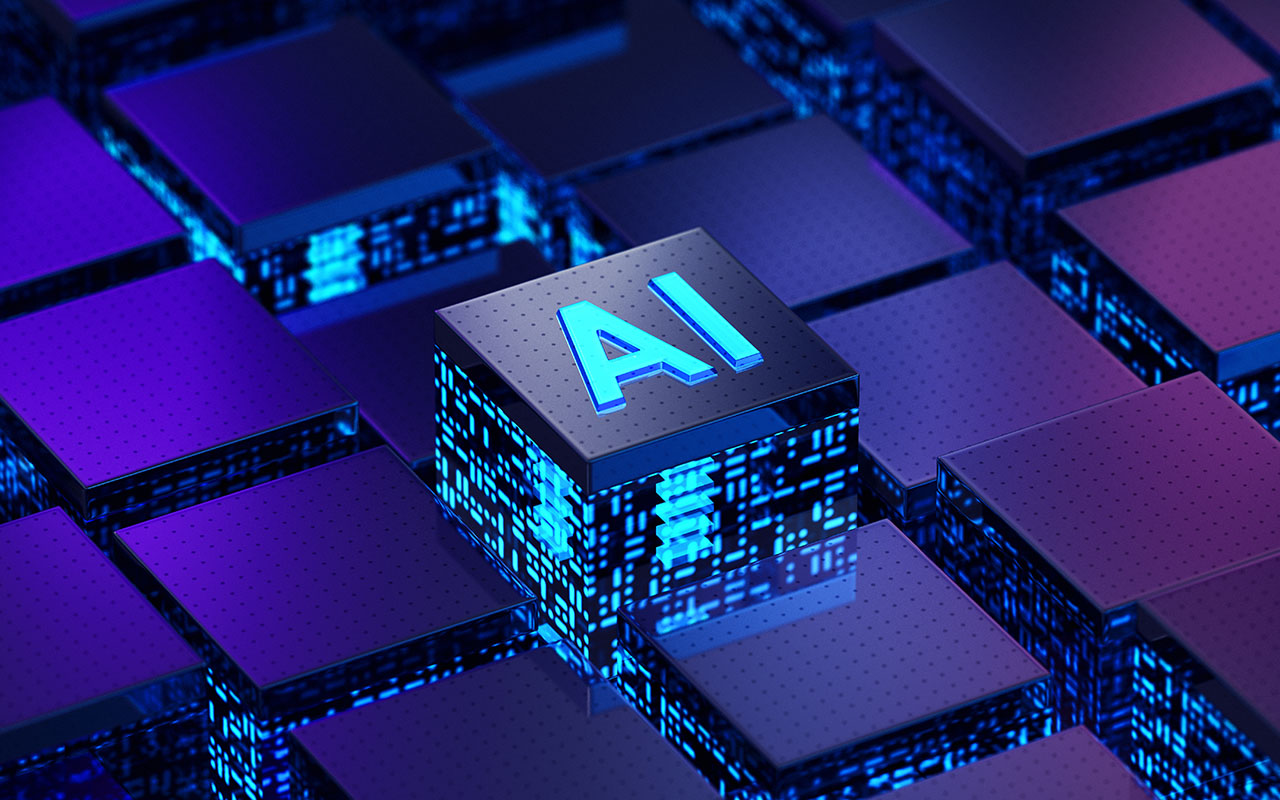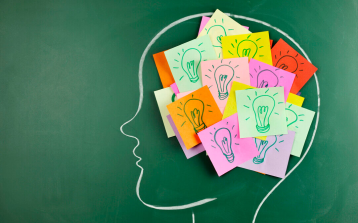Artificial intelligence is everywhere. We use AI algorithms in our smartphones to tell us how to navigate our cities. We chat with AI when we’re shopping online. And we increasingly use it daily to monitor our health and improve our wellbeing. As AI technology rapidly evolves, so too does its potential applications in healthcare and medical communications. Here, we explore some of the current exciting AI-driven developments in several areas, including disease diagnostics, drug development, communications, and AI’s place in the overall future of healthcare.
One of the key areas where AI is making a huge impact is disease diagnostics. This is because AI-powered diagnostic tools can often outperform their human counterparts in both speed and accuracy when it comes to digesting, processing, and detecting patterns in data. By analyzing large data sets, AI can help identify patterns and trends that might otherwise be undetectable. This can lead to earlier and more accurate diagnoses, as well as more personalized and effective treatments.
An example of this can be seen in ophthalmology, where an AI system called IDx-DR is now being used to screen for diabetic retinopathy, a condition that can lead to blindness. The system can detect the condition with an accuracy of 87.4%, which is significantly higher than the accuracy of human experts (71.3%).1
Natural language processing plays an integral role in AI’s ability to interpret large amounts of unstructured data, such as electronic medical records. Recently, pharma giant Roche partnered with tech company EarlySign in the area of AI-powered lung cancer diagnosis.2 The purpose of their partnership is to make early diagnosis of lung cancer widely accessible, which is key to patients beginning potentially life-saving treatment as early as possible. Their LungFlag software uses machine learning to analyze large amounts of patient information, such as lab results and demographic, medical and drug information, to identify individuals who have a high risk of developing lung cancer.
Analysis of medical images is another area where AI can make a big impact. AI can be used to automatically identify and diagnose various conditions based on images, such as X-rays or MRIs. In a randomized clinical trial conducted by the Smidt Heart Institute and the Division of Artificial Intelligence in Medicine at Cedars-Sinai, AI recently proved more successful in accurately assessing and diagnosing cardiac function when compared to sonographers (ultrasound technicians). This milestone was the first randomized clinical trial using AI in cardiology. During the trial, cardiologists evaluated 3,495 transthoracic echocardiogram studies and found that they more frequently agreed with AI results, correcting only 16.8% of the initial AI assessments compared to 27.2% of the initial assessments made by the sonographers.3
AI is also beginning to excite possibilities in the drug development space, with the world’s tech titans getting involved in transforming our understanding of biology. DeepMind is an AI firm (owned by Alphabet, parent company of Google) which, through its AlphaFold project, has predicted the structure of nearly all proteins known to science in just 18 months – a breakthrough that will speed up future drug development. AlphaFold has also made its discoveries freely available online.4 Biologists have been using these data to interrogate questions such as ‘how does this particular parasite work’ or ‘why does this particular disease happen in humans’. Further independent projects continue to delve into the AlphaFold data to see how this information can lead to new drug discovery.5
Big tech has huge ambitions around healthcare, with Amazon and Meta also undertaking research and looking to both partner with and potentially disrupt the pharma industry. Amazon’s ambitions are to use machine learning to revolutionize drug discovery, genomics, clinical trials and other parts of the drug development and testing process. Meta AI has recently also predicted the shape of 600 million proteins, including microbial molecules from soil, seawater and human bodies.6
Although AI-assisted robots have been around for a while, undertaking procedures once performed by a human surgeon alone, the area of robot-assisted surgery continues to grow. The pioneering Da Vinci System received FDA approval back in 2000, and today there are around 6000 da Vinci systems in operation that have performed over 8.5 million procedures worldwide.7 The system is at the forefront of minimally invasive procedures and its further development is moving towards general repetitive procedures being completed by AI technology alone.8 Other areas of development are AI-enabled preoperative planning and intraoperative assistance, as well as using AI to avoid surgery altogether, for example in the early detection of peripheral arterial disease where it can help avoid surgical amputations.
In the world of healthcare communications, AI is widely used through chatbots that can help patients manage their care. AI is also being used to create virtual assistants for doctors and other healthcare providers. These assistants can help with tasks such as scheduling appointments and sending reminders, and can provide patient education while reducing the administrative burden on healthcare professionals.
Developments in AI can reduce workload for frontline HCPs and improve the quality of communications. The Innovation Lab of the American Academy of Family Physicians recently found that Navina’s AI assistant reduces pre-appointment preparation time for physicians by 61%. By using its AI to extract insights from data, the system distils patient histories into a “patient portrait” to assist the physician and increase the accuracy of diagnosis.⁹ The World Health Organization has also recently launched what it describes as the world’s most extensive freely accessible AI virtual health worker that aims to reduce inequalities in global healthcare access.10
Data ethics aside, should we fear the inevitable expansion of AI within healthcare? While it is now widely accepted that algorithms and machines will become better at certain tasks, this does not remove the need for quality human interaction. In the future, a nurse may not be needed to draw blood as a machine may be able to do this, but this will not eliminate the need for nurses.¹¹ Will AI ever fully replace the human element of healthcare? Well, scientists have spent the last five years trying to teach a robot in Japan empathy. Teaching a robot to laugh at the right time when interacting with a human is an achievement, but overall, the results are still a bit creepy. The research team hopes to improve natural conversations between humans and AI systems, but we are still a long way from an AI embodying all of the characteristics and mannerisms that make a real live human so unique.12
While AI may not be the answer to all of our health-related problems, the breakthroughs already made and those on the horizon in health and medical communications are exciting to observe. There is no doubt that the landscape is growing, and new applications for the technology are evolving rapidly. When pulling these thoughts on the subject together, I thought it would be fun to ask an AI to write this article.13 It did its best – and roughly a few hundred words of the AI’s work has been retained in this piece. Can you spot the difference?
References
- https://jamanetwork.com/journals/jamanetworkopen/fullarticle/2786132
- https://www.fiercebiotech.com/medtech/roche-earlysign-expand-partnership-include-ai-powered-lung-cancer-diagnosis
- https://www.cedars-sinai.org/newsroom/late-breaking-heart-research-ai-more-accurate-than-technicians/
- https://alphafold.ebi.ac.uk/
- https://news.mit.edu/2022/alphafold-potential-protein-drug-0906
- https://www.nature.com/articles/d41586-022-03539-17.;
- https://wchh.onlinelibrary.wiley.com/doi/full/10.1002/tre.834
- https://www.hunimed.eu/news/dont-expect-robot-surgeons-expect-a-surgeon-ai-partnership/
- https://research.aimultiple.com/ai-in-surgery/
- https://www.fiercehealthcare.com/health-tech/navina-raises-22m-expand-ai-tool-physicians
- https://www.who.int/campaigns/Florence
- https://medicalfuturist.com/here-is-how-you-get-friendly-with-a-i-before-it-gets-to-the-office/
- https://www.youtube.com/watch?v=6tMiWog4l00
- https://app.copysmith.ai/





